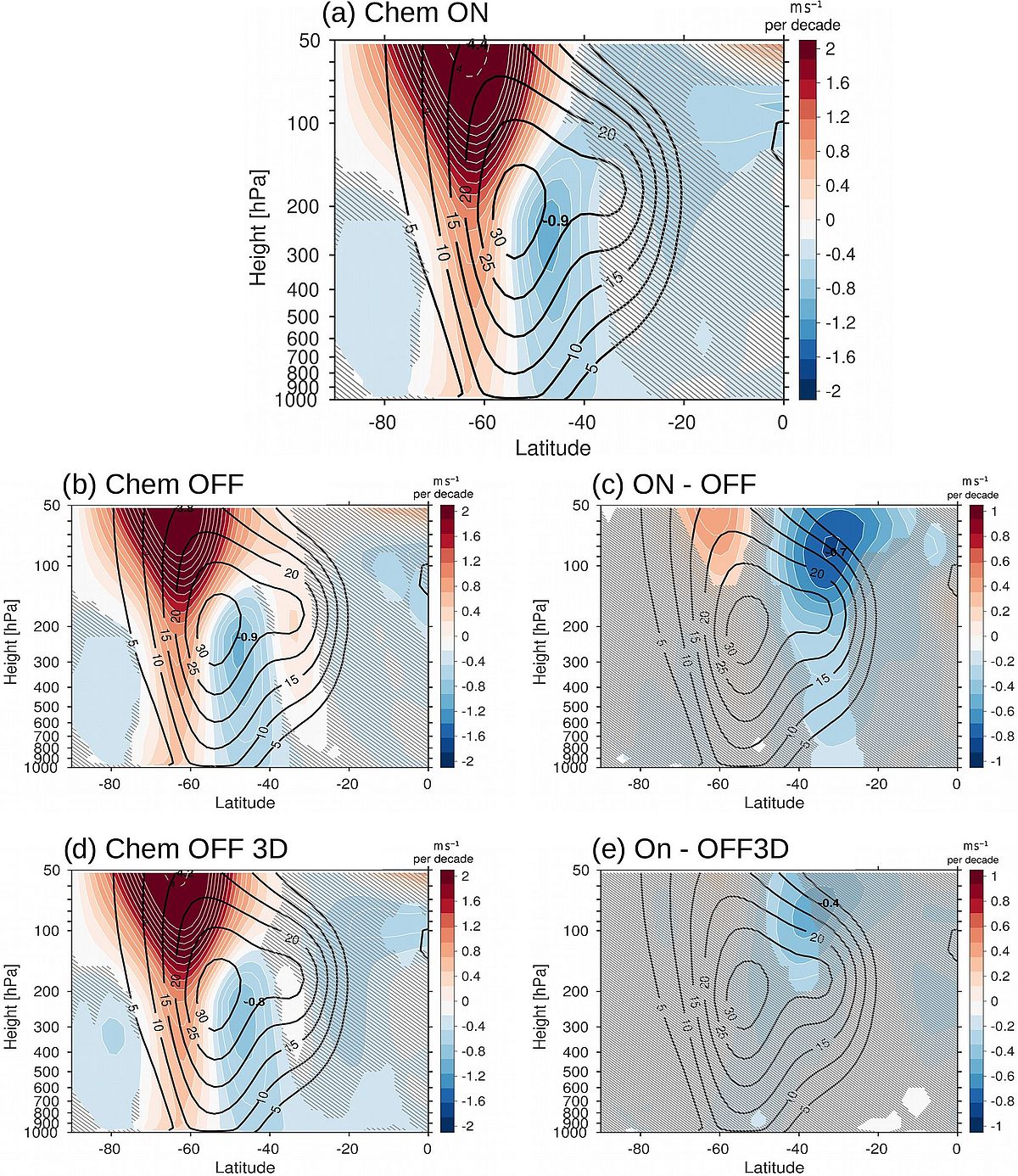How does the southern hemispheric jet respond to ozone depletion?
Southern Hemisphere lower-stratospheric ozone depletion has been shown to lead to a poleward shift of the tropospheric jet stream during austral summer, influencing surface atmosphere and ocean conditions, such as surface temperatures and sea ice extent. The characteristics of stratospheric and tropospheric responses to ozone depletion, however, differ among climate models depending on the representation of ozone in the models.
The most appropriate way to represent ozone in a model is to calculate it interactively. However, due to computational costs, in particular for long-term coupled ocean–atmosphere model integrations, the more common way is to prescribe ozone from observations or calculated model fields. Here, we investigate the difference between an interactive and a specified chemistry version of the same atmospheric model in a fully coupled setup using a nine-member chemistry–climate model ensemble. In the specified chemistry version of the model the ozone fields are prescribed using the output from the interactive chemistry model version. We use daily resolved ozone fields in the specified chemistry simulations to achieve a very good comparability between the ozone forcing with and without interactive chemistry.
We find that although the shortwave heating rate trend in response to ozone depletion is the same in the different chemistry settings, the interactive chemistry ensemble shows a stronger trend in polar cap stratospheric temperatures (by about 0.7 K decade−1) and circumpolar stratospheric zonal mean zonal winds (by about 1.6 m s−1 decade−1) as compared to the specified chemistry ensemble. This difference between interactive and specified chemistry in the stratospheric response to ozone depletion also affects the tropospheric response. However, an impact on the poleward shift of the tropospheric jet stream is not detected. We attribute part of the differences found in the experiments to the missing representation of feedbacks between chemistry and dynamics in the specified chemistry ensemble, which affect the dynamical heating rates, and part of it to the lack of spatial asymmetries in the prescribed ozone fields. This effect is investigated using a sensitivity ensemble that was forced by a three-dimensional instead of a two-dimensional ozone field.
This study emphasizes the value of interactive chemistry for the representation of the Southern Hemisphere stratospheric-jet response to ozone depletion and infers that for periods with strong ozone variability (trends) the details of the ozone forcing could also have an influence on the representation of southern-hemispheric climate variability.

Reference:
Haase, S., Fricke, J., Kruschke, T., Wahl, S., and Matthes, K.: Sensitivity of the Southern Hemisphere circumpolar jet response to Antarctic ozone depletion: prescribed versus interactive chemistry, Atmos. Chem. Phys., 20, 14043–14061, doi.org/10.5194/acp-20-14043-2020, 2020.
Dieser Artikel wurde auch in den GEOMAR News aufgeführt: https://www.geomar.de/news/article/ozon-und-jetstream-eine-komplexe-beziehung


